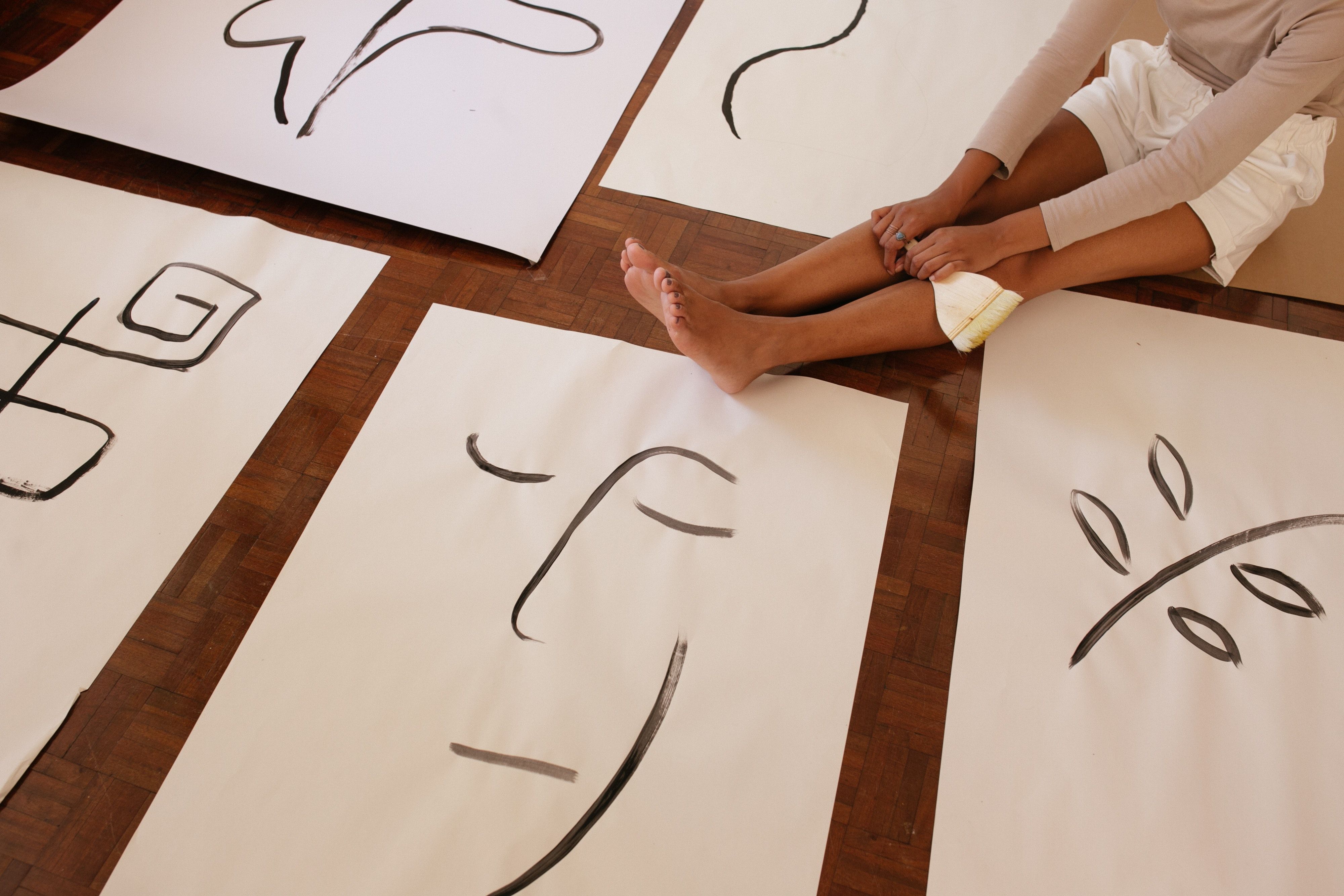
Family Constellation Therapy
The first time I heard of family constellations was in adoption class.
My spouse and I had decided to start our family through adoption, but first had to attend days and days of training. The facilitator was teaching us about open adoptions, where an adoptee still maintains regular contact with their birth family.
“In school, most of us had to draw our family trees,” she said. “But families are more complicated than that. It’s not just about marriage and reproduction. Families are constellations. A cluster of many people, connected by many invisible lines, making a shape that is unique to that family.”
Family constellation work is an approach to individual therapy that reckons with the profound impact our families have on how we function. In this kind of work, families are considered a complex system, with its own unique and twinkling shape. Over the course of a few sessions with a licensed therapist, individuals deeply explore their family dynamics so that they can feel less stuck.
Origins of Family Constellation Therapy
The origins of family constellation work can be traced to German therapist Bert Hellinger, who first developed the approach in the 1970s. Building on contemporary concepts like Bowen Theory, Hellinger focused on representing families and other systems in the therapeutic space.
For decades, Hellinger pioneered this work, delivering lectures and workshops while practicing with clients. It wasn’t until the 1990s when psychiatrist Gunthard Weber helped Hellinger publish a collection of books that helped popularize family constellations.
The legacy of family constellation work has been lasting, bringing many benefits to innumerable families. Bert Hellinger’s legacy, however, is less positive. Today, we can look back at Hellinger’s writing and easily spot sexist and homophobic ideas. Fortunately, many clinicians more brilliant than Hellinger have proven that family constellation work can be applied without harmful vitriol.
Understanding the Basic Principles
Family constellation therapy is rooted in three basic principles that describe the most essential needs we have of family:
- The Need for Belonging: Whether we enter our family by birth, marriage, or choice, we yearn to identify ourselves being part of a larger whole.
- The Need for Social Order: We innately relate to our family in response to signals of authority, hierarchy, and sub-groups.
- The Need for Equilibrium: In family relationships, we need to be able to both give and receive.
In family constellation therapy, these principles are applied to explore how family dynamics are creating system-level problems. This offers insight for the individual to reimagine how they could relate to the broader family.
Exploring the Concept of Family Constellations
The metaphor of a constellation helps us look at a family for what it is: a system of many individuals in many relationships to each other. Other modalities of therapy focus on the individual, or perhaps, a relationship between two people. Instead, family constellation work represents the many dimensions at play in a complex group setting.
The Role of Family Dynamics
Every family operates as a feeling, emotional unit in its own right. That’s the fundamental insight behind theories of family systems.
When we look at families as systems, we can acknowledge the ways that the system moves stress, anxiety, and pressure among family members.
In family constellation work, these patterns of emotional distress within a family are referred to as systemic symptoms. These symptoms could show up in just one individual, or it may be repeated in subsets of the family. Some examples include:
- Emotional dysregulation that gets passed down from parent to child.
- Mood or personality disorders by family members of a shared gender.
- An outcast sibling becoming prone to addiction or risk-taking behavior
The Importance of Ancestor Connections
When we feel stuck, it’s easy to turn inward and ask questions like what’s wrong with me. We similarly tend to turn toward our immediate family when things are stressful: I hate how they always do that, and why do they treat me that way.
But, becoming un-stuck often depends on going beyond individuals and interactions.
Each and every one of us is born with innate qualities and preferences. We are conditioned to behave in ways that conform, and in ways that set us apart. And, so much of our individuality is influenced by genetics and familial origins.
From generation to generation, families pass along patterns that shape how we feel and act.
As an adoptive parent, I’ve learned it would be foolish to expect my son to share all of my instincts and values. So much of who he is developed in his six years on Earth before we met. And it can be traced back even further, to things that he never experienced, yet innately knows. He carries the traumas his mother felt. He has nostalgic pride for the coconut candy from his grandmother’s hometown in Vietnam. He describes himself the same way his birth father described himself to me, even though the two of them haven’t met yet.
Family constellation work not only provokes us to confront the dynamics of our immediate family, but it calls us to make sense of them in the all-important context of where we come from.
The Process of Family Constellation Therapy
Great therapy adapts to you and your therapist. In fact, nearly half of the clinicians surveyed by Alma named the client-therapist relationship as an important element of effective care. This is no different with family constellation work.
While approaches to family constellation work should vary, you can expect the process to include these three steps:
1. Initial Consultation
It’s common for therapists to offer free 15-minute consultations over phone or video chat before you decide to start family constellation work. This call is an opportunity for the clinician to better understand your goals, and to help you figure out if their approach is right for you.
Alma’s directory allows you to find therapists and schedule no-obligation consultations. I encourage folks to schedule at least three, ideally within a week or two of each other, so you can gauge which therapist feels like the strongest fit.
Family constellation therapy cost is often covered in an initial consultation. Typically, family constellation work is a low-cost, short-term approach that takes place over just a few sessions. If you use Alma’s directory, you’ll get a sense of each clinician’s rates on their profile. You can also use Alma’s cost estimator tool to figure out how much family constellation therapy costs with insurance, which can range from $0 to $300+ per session.
2. Setting Up the Constellation
Once you have found a therapist to start family constellation work, you’ll need to set up the constellation.
In individual family constellation therapy, you start by describing your family to your clinician. You’ll then work with the therapist to represent those people in the space, allowing you to more deeply explore family dynamics between relatives. This can be done with paper cut-outs, miscellaneous objects, and even in trays of sand, like a zen garden.
Family constellation work can also be done in a group setting. If you opt for this style of therapy, you would join a handful of other clients to do this work together, standing in for each others’ family members as needed. Doing this work in a group setting opens the possibility of doing role play to better represent family dynamics.
3. Experiencing Constellation Process
If you do family constellation work, you can expect it to take place over a few sessions, each lasting 2-3 hours. This will, of course, vary from provider to provider. You can complement this short-term intervention with more long-term talk therapy, drawing from modalities like Cognitive Behavioral Therapy (CBT).
Family constellation work is different from Internal Family Systems (IFS) therapy in that constellation work focuses on relationships and dynamics within the family system. IFS, or “parts work,” instead explores the different parts of an individual’s emotional landscape, relating those parts of the individual to each other much like a family.
No two experiences of family constellation work are the same. But, if you do pursue family constellation therapy, you can expect a lasting shift in your mental health and relationships. One 2022 study found that a vast majority of people who do family constellation therapy see significant improvement, even six months following the session(s).
Take action:
How to Find a Family Constellation Therapist
The most important thing you can do to ensure you have a successful therapy experience is to choose a therapist who feels like the right fit.
There are a number of ways to know if a therapist is the right fit. Ultimately, we all have very unique and personal criteria when it comes to mental health care.
To look for family constellation therapy near me, I would start in Alma’s directory to find therapists in my state (California) who accept my insurance. I’d likely also look for therapists who I felt I could trust, whether it’s because they share my culture, identity, or life experiences.
My best advice: reflect on what you want family constellation work to feel like, and then take your time to look for it by scheduling consultations with a few different therapists.
Dec 11, 2023

Looking for a therapist?
Get tips on finding a therapist who gets you.
By submitting this form, you are agreeing to Alma's privacy policy.



